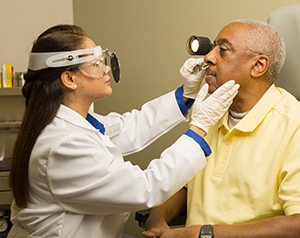After Endoscopic Sinus Surgery
After Endoscopic Sinus Surgery
After surgery you’ll be moved to a recovery room. You may feel groggy from the anesthesia and will likely have some discomfort. There will be a dressing under your nose to absorb drainage. You may also have packing (absorbent bandage) inside your nose. You can usually go home as soon as you’re no longer feeling groggy. This is usually the same day. In certain cases, you may need to stay overnight.
The first week
Your doctor will schedule an office visit a few days after surgery to check on your progress. At this visit, your doctor will remove dried blood and mucus to help you heal. He or she will also remove any nasal packing. It’s normal to feel stuffiness and have pinkish or dark red drainage. Change your nasal dressing as needed, and take any prescribed medicines. Also be sure to drink plenty of water. Other guidelines from your doctor may include:
Rinsing your nose and sinuses with saltwater
Sneeze with your mouth open
Not blowing your nose
Not doing strenuous exercise, straining, or lifting
Using a humidifier to keep nasal passages moist
Not taking aspirin or ibuprofen
Sleeping with your upper body raised
Not eating hot or spicy foods
The next few weeks
As you’re healing, it’s normal to feel some stuffiness and have nasal crusting. Keeping your nasal passages clean and moist will help speed the healing process and prevent scarring. Also be sure to:
Take medicine as directed
Stay away from irritating substances such as dust, chalk, and harsh chemicals
Use saltwater rinses or a humidifier as directed.
Drink plenty of water
Stay away from people who have a cold
Stay away from allergic triggers
Talk with your doctor before swimming or air travel
When to seek medical care
Call your healthcare provider right away if you notice any of the following:
Large amount of bright red bleeding
Fever of 100.4°F (38°C) or higher, or as directed by your healthcare provider
Changes in vision, or swelling around the eye
Signs of infection, such as yellow or greenish drainage
Constant headache or increasing pain
Drainage of a large amount of clear fluid
Extreme tiredness, or a stiff neck
Updated:
October 06, 2017
Sources:
Pathophysiology and treatment of fever in adults. UpToDate.
Reviewed By:
Fraser, Marianne, MSN, RN,Kacker, Ashutosh, MD
